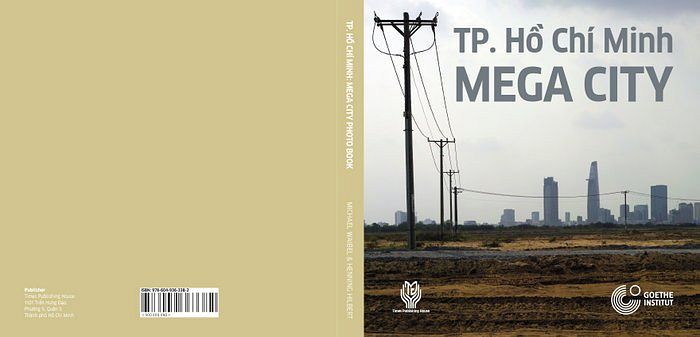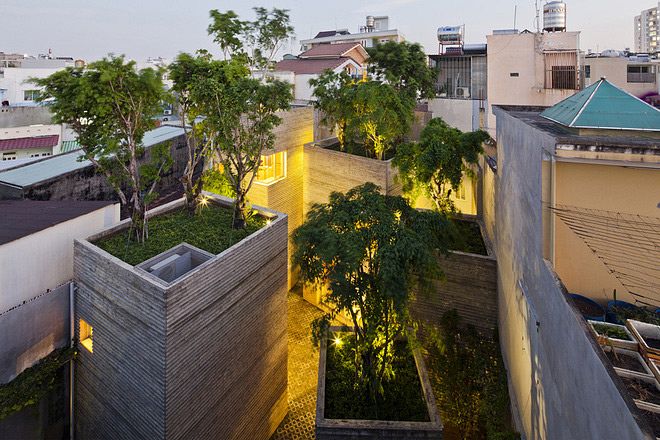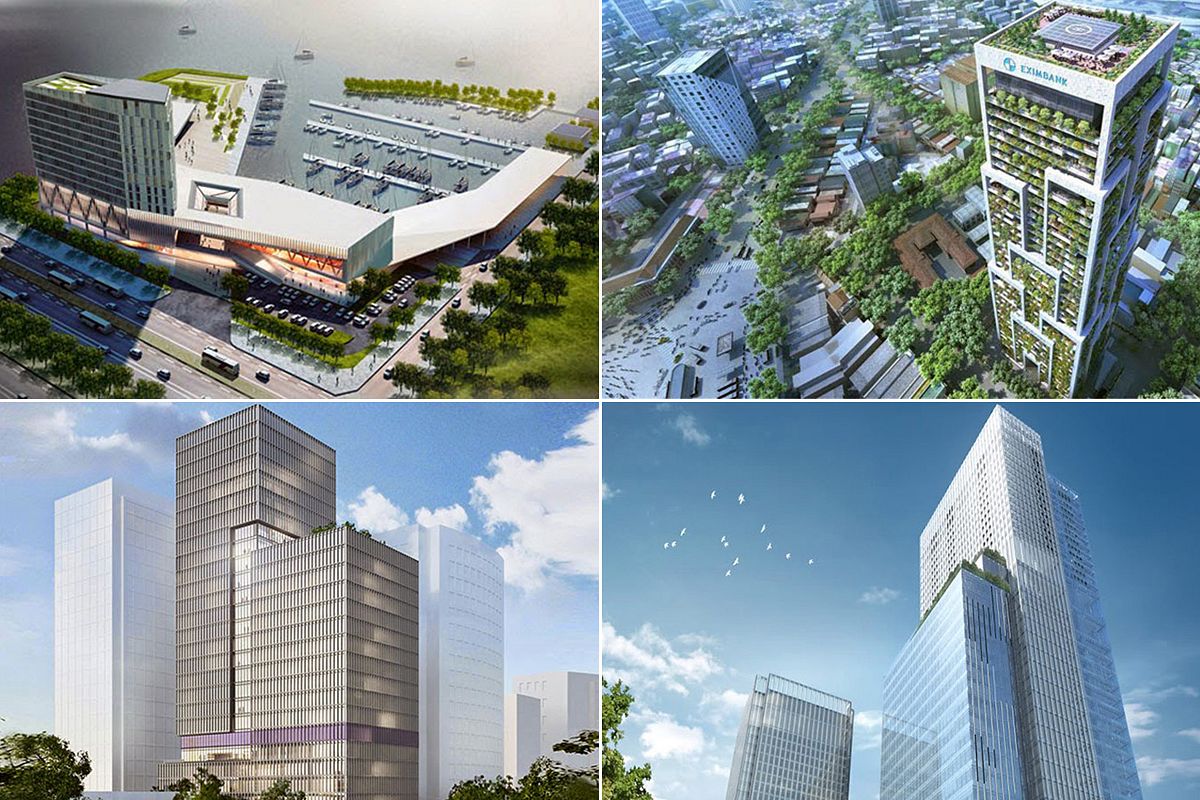The TP. Hồ Chí Minh: MEGA City photo book examines major themes relating to HCMC's rapid urban development. We sat down with one of the book's editors, Michael Waibel, and asked about how his team accessed unique locations such as the Bitexco Tower's helicopter pad, plans to create a similar publication for Hanoi and changes to the city's urban fabric he's observed over the last 20 years ago.
What has the reaction been to the book thus far, especially among locals?
The reactions to book have been overwhelmingly enthusiastic, so far. The launch events organised on behalf of the German Cultural Goethe Institute both in Hanoi and in Ho Chi Minh City were very crowded. Many of the books were sold following each of those events. We are very proud that even the chairman of the People’s Committee of TP. HCM got his personal copy in during an event organised by EuroCham.
A general aim of this publication was to increase the identification of local inhabitants with their own city because we firmly believe that this contributes to a more sustainable method of urban development. By showing the great diversity of urban housing, urban life-styles and by highlighting, for example, the inherent qualities of the small alleyway neighbourhoods (hems) we would like to show that life in Ho Chi Minh City should not only focus on District 1 or the fancy living environment in Saigon South alone, but that one can find good quality of life in areas often overlooked by local policy makers and tourists.
Can you tell us a bit about how you were able to get access to these high vantage points, especially the helicopter pad on the Bitexco Tower?
In the case of Bitexco Financial Tower, a contributing photographer, Leigh Ann Chow, provided us with contact details of the property management board. It took some communication efforts to convince them to allow us to enter the helipad platform. But permission was only given for a period of 30 minutes and for only two people at the same time. As we were a group of three, we had to rotate and take photos quickly.

Photos by Michael Waibel.

Photo by Michael Waibel.
You took photos from, airplanes, skyscrapers and many other unique locations for this book. Which was the most fun? Which was the hardest to access?
Taking photos from the top of high-rise building was indeed an adventure in some cases. The usual strategy was simply to use the often dusty and dark emergency staircase to reach the roof. The most frightening experience was to reach the rooftop of the Ruby Tower at Saigon Pearl high-rise condominium development. When I was there for the first time in December 2012, you had to climb-up a vertical ladder and finally open a trap-door. Because the weather conditions were not great that day, I went-up a second time in March 2013 but triggered a very loud alarm after opening the trap-door. Luckily I was able to identify and off switch and after a few seconds, was able to stop the noise. When I went there a few days, ago, the alarm device had been removed.

View from City Garden Apartment towers. Photo by Michael Waibel.
The most impressive sight from above was from City Garden apartments in Binh Thanh District. There, I got official permission from the property management board and was allowed to take photos from all of the three towers, accompanied by a security guard, of course. The view from there is simply amazing, you see both the endless maze of low-rise high-density urban fabric and the luxury high-rise towers of the Manor Saigon and Saigon Pearl. This striking contrast illustrates what academics call, “urban-spatial fragmentation”.
What were your favorite chapters in the book?
By means of this book, we tried to draw a comprehensive picture about urban development, showing the city from various spatial and social perspectives. Of course, you like the chapters that you have contributed to most so in my case, this was the chapter about views from above and about housing. I also like a lot the chapter about people done by Astrid Schulz, a professional photographer from London. She is able to capture the urban citizen in their personal living environment and passes on short stories about their lives and aspirations about the city they live in. But I also like the last chapter, which we called “The Soul of the City” a lot. It mainly shows HCMC’s urban inhabitants and their use of public space, both by day and night.
We noticed a large contingent of Vietnamese academics at the book launch event in HCMC. Can you tell us a bit more about your work with Vietnamese universities?
In my case, I have been cooperating with Vietnamese universities for a long time, giving lectures at the University of Architecture or the University of Social Sciences and Humanities. Topics ranged from urban social geography to urban green governance to urban green growth. These lectures were given in the context of a long-term project funded by the German Ministry of Education and Research (BMBF) dealing with climate change and sustainable urban development or in the context of short-term appointments supported by the German Academic Exchange Service (DAAD). In the course of developing the photo book we tried to involve Vietnamese institutions as much as possible. Many key agencies of urban development in Ho Chi Minh City have officially endorsed our publication such as the Department of Construction, the Southern Sub-Institute of Urban and Rural Planning, the University of Architecture, the University of Social Sciences and Humanities or the Vietnamese-German University.
The book is beautifully done but a bit on the pricey side. Would ever consider taking on more sponsors to reduce its cost?
The support from our sponsors has been substantial, already. They received complimentary copies in exchange for their support and will distribute those. The book is being sold at local bookshops for 900,000 VND. We are well aware that this is a significant amount of money, but please consider it is a nearly 300 page hard-cover publication with an excellent printing quality. You should keep in mind that the endless hours of taking photos, editing and assembling photos, doing the layout design and proof reading picture captions in three languages have all been unpaid tasks. Considering this, we feel that the price is still low. Our Vietnamese partner organisations, which have endorsed this book, will receive a stack of complimentary copies for their support.
We know the book focuses on the future, but let’s step back to the past for a moment. You’ve been coming here since the mid-90s before development really took off. What’s something you miss from those days that’s no longer around?
What I certainly don’t miss it the limited amount of decent restaurants and cafés at that time. In general, the development of the past two decades has been positive. The urban citizens have higher living standards and are provided with much better housing now. Urban poverty has been reduced significantly. The downside, however, is that traffic and the environmental pollution have undoubtedly increased.

Vision for Thu Thiem (2011). Photo by Michael Waibel.
What I regret most is the wide-spread destruction of beautiful French colonial villa buildings in favour of high-rise tower development. The new Central Business District development in Thu Thiem is suffering from lengly delays. A lot of the more recent skyscraper construction in the city centre of District 1 should have been erected opposite the Saigon River on Thu Thiem peninsula. Also the extension of urban development towards the South can be critically reviewed. There is a lot of swampland much needed as a retention area in case of high-tide and heavy rainfall events. The sealing-off of ground there will worsen the already precarious urban flooding situation, which will further increase due to the anticipated risks related to climate change.
You’ve announced plans for another edition of this book. How will it differ thematically from the first?
The next aim is to publish an updated edition, which includes French language, as well. The French PhD student Marie Gibert who coordinated the chapter about the hem areas has already begun the translation work. Right now we are looking for French companies, which might support this effort. We are very grateful for hints regarding this. We’re also considering publishing an edition in Japanese language because so many Japanese are working in Ho Chi Minh City. Regarding this, we are looking for support regarding translation and sponsorship. Finally, the Artbook publishing house encouraged us to edit a more tourist-friendly edition with a smaller format and less pages. The current volume is weighing about 2.6 kilos. This is just too much to fit into a backpack.
What can people do to get involved in the next book?
Contributing photographers are always welcome. They should just contact us.
Any plans for a similar effort in Hanoi?
Indeed there are plans to edit a similar book about Hanoi urban development, hopefully sometime in the next year. The Goethe Institute has already confirmed its support for this and AUDI Vietnam will be the premium sponsor once again. Further, the German companies SIEMENS has showed interest in sponsoring this. We are still looking for more funding from the corporate sector, of course. These kinds of photo books are a unique gift for customers, family and friends, after all.
Saigoneer is proud to be the media sponsor of the TP. Hồ Chí Minh: MEGA City photo book which was formally released on February 19. The book, edited by Michael Waibel and Henning Hilbert, was produced with the support of the Goethe Institut, and funding from Audi.

Over the past few weeks, we gave an overview of the book's fantastic photos which can be viewed here.
The book is available at HCMC Artbook book shops. To order a copy directly, please contact info@saigoneer.com.














